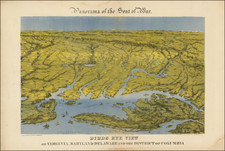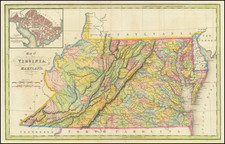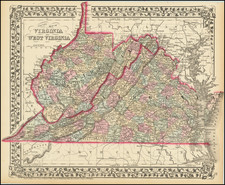Virginiensium saltandi ratio solennibus festis by Theodor De Bry, published in Frankfurt in 1590, offers a vivid representation of Algonquian-speaking Indians from the Outer Banks region of what is now North Carolina. Based on John White's watercolor painting, this hand-colored engraving delves deeper into the dance and rituals of the native people, providing crucial insights into the cultural and religious practices of not only these Indians but also their linguistic kin in Tidewater Virginia.
In the latter part of the 16th century, European expeditions to the New World increasingly sought to document indigenous cultures. White's initial sketches acted as direct visual accounts of the native tribes, but De Bry's adaptations expanded upon them. He introduced elements such as a blue sky and green grass, and emphasized certain details, like the branches held by the dancers. His interpretation of the central figures as exclusively female aligns with Thomas Hariot's descriptions.
The illustrations of De Bry were paired with Thomas Hariot's A briefe and true report of the new found land of Virginia (1588), a book detailing Hariot's experiences in Roanoke. This work, supported by De Bry's illustrations in the 1590 Latin edition, provides context to the indigenous societies of the time, while also shedding light on European perspectives and interests in the region.
Theodor de Bry (1528-1598) was a prominent Flemish engraver and publisher best known for his engravings of the New World. Born in Liege, de Bry hailed from the portion of Flanders then controlled by Spain. The de Brys were a family of jewelers and engravers, and young Theodor was trained in those artisanal trades.
As a Lutheran, however, his life and livelihood were threatened when the Spanish Inquisition cracked down on non-Catholics. De Bry was banished and his goods seized in 1570. He fled to Strasbourg, where he studied under the Huguenot engraver Etienne Delaune. He also traveled to Antwerp, London, and Frankfurt, where he settled with his family.
In 1590, de Bry began to publish his Les Grands Voyages, which would eventually stretch to thirty volumes released by de Bry and his two sons. The volumes contained not only important engraved images of the New World, the first many had seen of the geographic novelties, but also several important maps. He also published a collection focused on India Orientalis. Les Grands Voyages was published in German, Latin, French, and English, extending de Bry’s fame and his view of the New World.










![[Jefferson's Notes on the State of Virginia] Observations sur la Virginie [with the map:] A Map of the country between Albemarle Sound, and Lake Erie, comprehending the whole of Virginia, Maryland, Delaware, and Pensylvania, with parts of several other of the United States of America. Engraved for the Notes on Virginia.](https://storage.googleapis.com/raremaps/img/small/51828.jpg)

![[ Fredericksburg, Virginia ] Le Port de Fredericsbourg dans l'Amerique](https://storage.googleapis.com/raremaps/img/small/86570.jpg)
![[ The King of Florida ] Der Konig in Florida](https://storage.googleapis.com/raremaps/img/small/94085.jpg)
